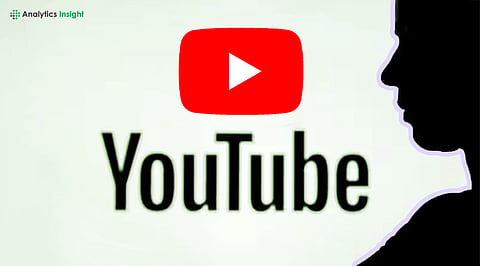

YouTube is banning AI-generated videos starting from July 15, 2025. This is a remarkable step the entertainment platform has taken against low-quality content.
Once the policy is implemented, repetitive and mechanical voice-over content will be banned, with the channels getting penalties.
Several new creators are scared of this policy, but auditing their content can make them safe.
YouTube has been dealing with spam videos for a long time. Low-quality, AI-generated videos have destroyed the content quality and monetization on the platform. YouTube is introducing new policies. These policies will be stricter. They will be part of the YouTube Partner Program. The rollout date is July 15, 2025. The guidelines aim to limit AI-generated content.
Many creators are now concerned about their content, but this is not a blanket ban on AI. Instead, the platform is now determined to take steps against videos that are mass‑produced, repetitive, or inauthentic. To be more specific, these policies work against those creators who use automated voiceovers, stock visuals, templates, or minimalist editing.
Here’s what creators should know about this update:
The latest YouTube AI ban has stirred the YouTube community. Creators who have been leaning heavily on automation or third‑party content will face the darkest consequences. The requirements to get banned include:
AI-generated voiceovers or avatars that lack human insight or commentary.
Slideshow-style videos, templated narration, or recycled visuals.
Repetitive content formats, such as top‑ten lists and countdowns, remain consistent across videos.
These are the contents that YouTube is going to penalize after the policy rolls out. These videos and Shorts have been considered ineligible for a long time, but this time, the authorities are determined to take strict action against them. Channels posting these videos will lose their monetization entirely and have reduced visibility. They can even witness a complete removal from YPP.
The Indian creator community has welcomed this policy wholeheartedly. One of them mentioned, “This rule is great for real creators. Copied content had flooded the platform.” However, worldwide, the scenario isn’t the same.
The straight answer is no. The platform’s latest policies never mentioned that all content that uses AI will be banned. As long as creators use AI responsibly and add substantial creative value, the content will be acceptable.
YouTube has clarified that this policy is a minor refinement of the existing rules. Therefore, AI tools are still permitted, as long as they are used to support human-made content or analysis. However, to stay in the safe zone, creators should use generative AI tools for captions, summaries, and voices without losing the value of the content. It’s recommended not to copy content.
Avoid using the same format back-to-back on videos or Shorts. Channels that use repetitive formats or near‑identical videos frequently will be flagged, even if some human input exists.
The base rule for monetization remains unchanged: 1,000 subscribers and either 4,000 watch hours or 10 million Shorts views within 90 days. The twist is that with the new regulations, these criteria alone won’t guarantee monetization. Creators have to demonstrate originality, creativity, and real effort to earn from the platform.
Also Read: Top YouTube Channels for Mastering Content Writing
The situation is tricky for creators, but survival depends on their sincerity and creativity. Below are the steps one can follow to ensure the content quality:
Audit your recent content: The first thing is to identify videos that rely too much on stock assets, AI narration, or repetitive structure.
Transform or retire: Once identified, either these should be completely reworked to add innovative narration, analysis, or context, or they must be deleted from the channel.
Use AI thoughtfully: One can use AI for enhancement, but make sure to frame it within human-led storytelling. Don’t rely on synthetic generation too much.
YouTube’s AI-content restriction rule doesn’t cut down the use of AI completely. Instead, it has drawn a clear line to maintain content quality on the platform. Videos that rely heavily on recycled footage, automated narration, or repetitive formats put channel owners at risk. Their monetization may get cancelled.
However, this policy won’t change things much for those who create content thoughtfully and use AI to enhance the quality. The highlight remains YouTube’s commitment to authenticity. Despite the millions of pieces of content posted on it every day, this platform prioritizes innovative and meaningful content.
Also Read: Top 10 ChatGPT Prompts to Boost Your Email Marketing
Is YouTube banning all AI-generated videos?
Ans: No, YouTube is not banning all AI-generated videos. The ban targets mass-produced, repetitive, or low-effort AI content. Creators can still use AI if they add originality, creativity, or significant personal input.
Will AI-generated videos be demonetized under the new policy?
Ans: Yes, channels relying on repetitive, low-effort AI content risk demonetization. Only original, creative, or transformative AI-generated videos will remain eligible for monetization under YouTube’s updated policies starting July 15, 2025.
What types of AI content are most at risk?
Ans: Videos most at risk include those with AI voiceovers or avatars without commentary, repetitive slideshows, template-based content, and mass-produced uploads with minimal human involvement or creativity.
Do creators need to label AI-generated content on YouTube?
Ans: Yes, creators must label AI-generated content, especially if it features realistic visuals or voices. Not labeling can result in YouTube adding the tag automatically or even removing monetization privileges for the channel.
How can creators continue to use AI tools without risking demonetization?
Ans: Creators should use AI to enhance, not replace, their creative input. Focus on originality, provide unique perspectives, and avoid repetitive or low-effort formats to stay eligible for monetization under the new rules.
